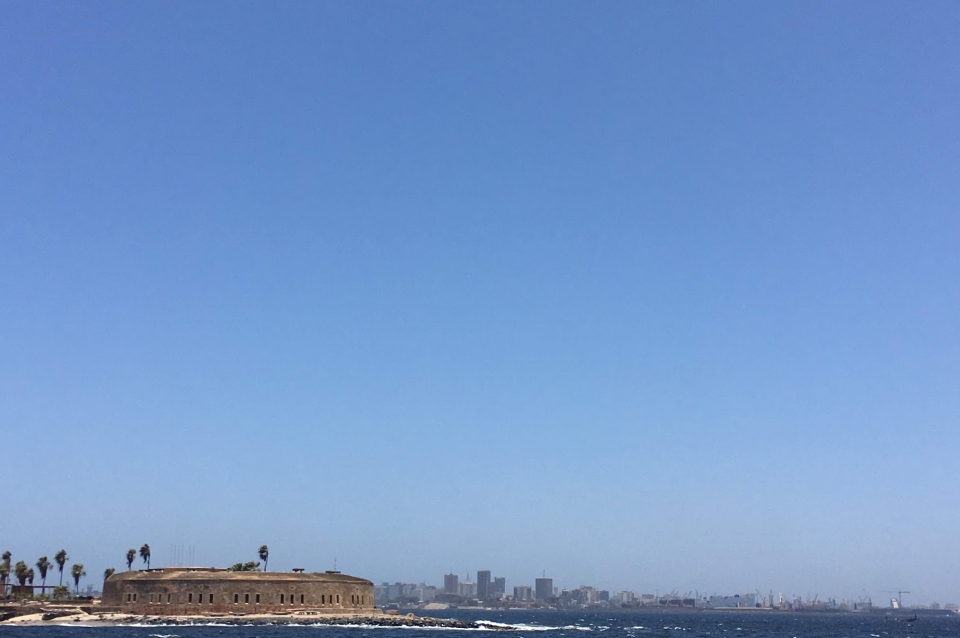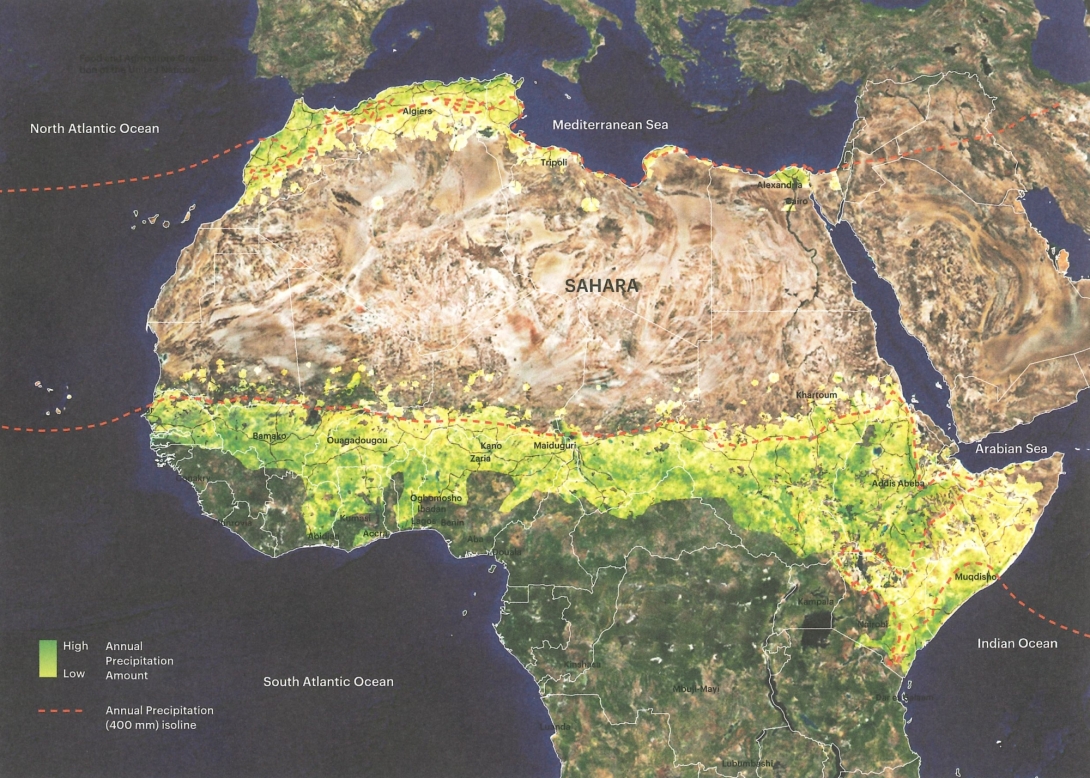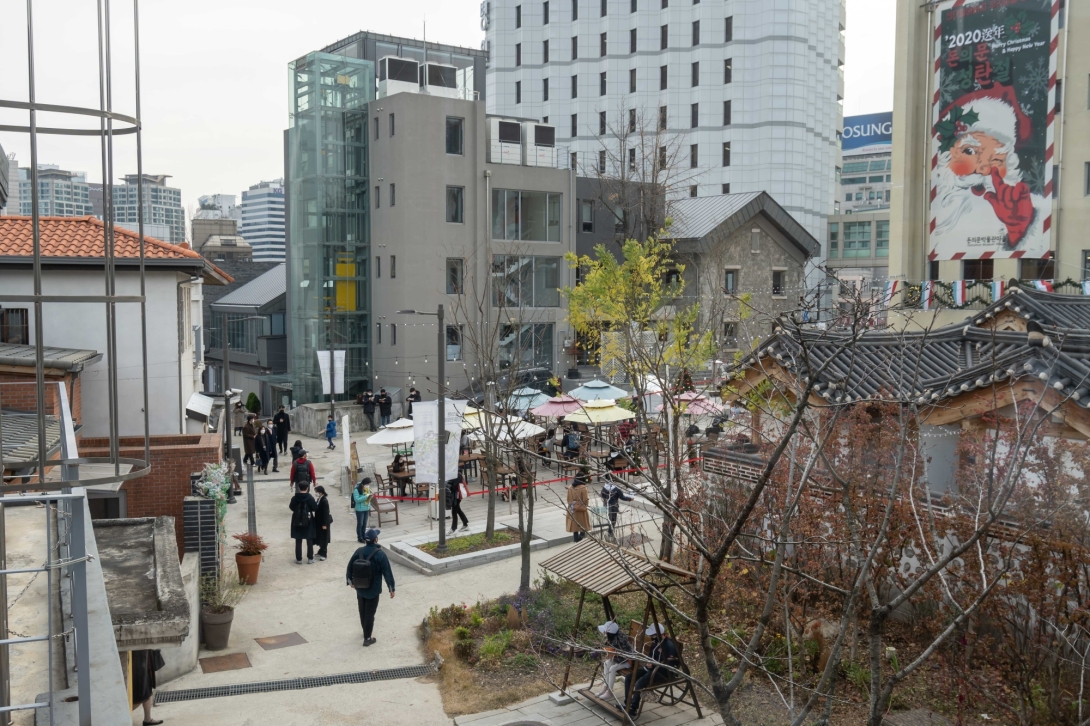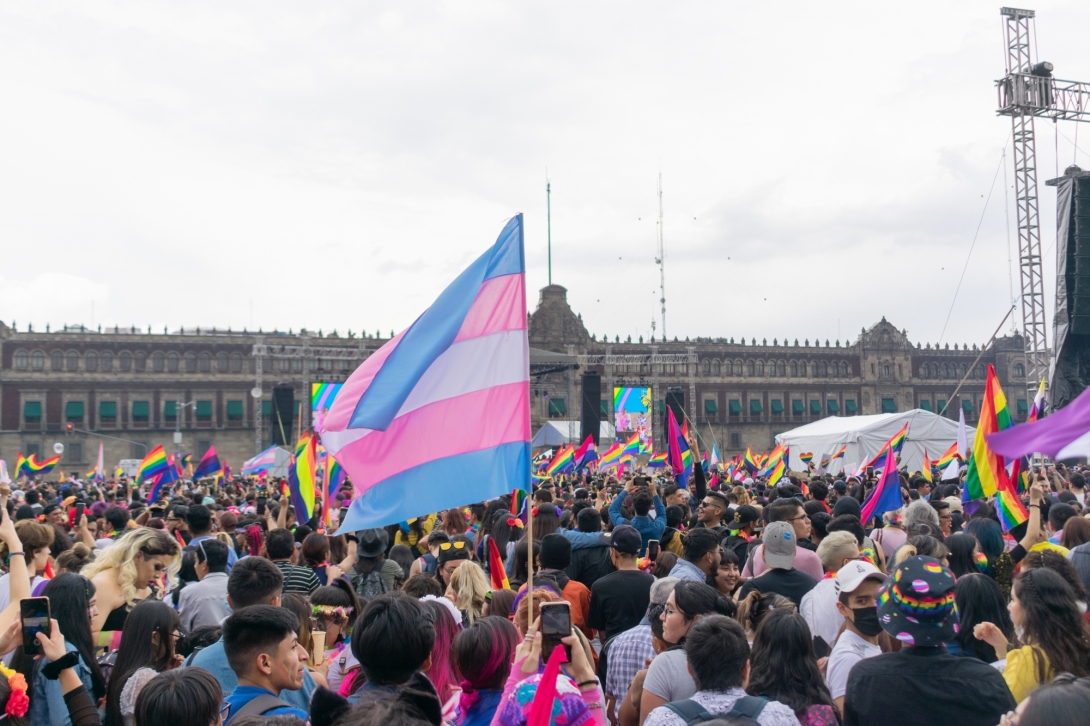Fall 2024 Preview
In cities from Dakar to Seoul, this semester's coursework immerses Weitzman students in the politics of sustainable development, the power of data for persuasion, and the human stories in physical spaces.
Stuart Weitzman School of Design
102 Meyerson Hall
210 South 34th Street
Philadelphia, PA 19104
In cities from Dakar to Seoul, this semester's coursework immerses Weitzman students in the politics of sustainable development, the power of data for persuasion, and the human stories in physical spaces.

The island of Gorée, off the coast of Senegal opposite Dakar. The African capital is the base for a fall studio that brings together students from the Department of City & Regional Planning and the Department of Landscape Architecture to develop a new greenbelt. (Photo Rob Levinthal)
Michael Grant
mrgrant@design.upenn.edu
215.898.2539
Whether working on hands-on projects in Philadelphia, exploring cities abroad, or diving into the connections between people and architecture, Weitzman students will be engaged with real-world design challenges and social issues throughout the Fall 2024 semester. Following is a sampling of five courses in which students will explore the power of relationships: between people, places, and ideas. The advanced design studios—three of which are highlighted here—provide an in-depth exploration of the transformations reshaping 21st-century cities by building connections between Penn faculty, alumni, and leaders in the host cities.

Drawing by Anni Lei based on mapping by the Food and Agriculture Organization of the United Nationa, esri, and Google Earth imagery. From Design With Nature Now (Lincoln Institute of Land Policy, 2019).
LARP 7010/CPLN 7020: Dakar Greenbelt
Led by David Gouverneur, Associate Professor of Practice in Landscape Architecture and City & Regional Planning; Ellen Neises, Associate Professor of Practice in Landscape Architecture and Lori Kanter Tritsch Executive Director at PennPraxis; and Rob Levinthal, Lecturer and PhD student in City & Regional Planning; with Sierra Bainbridge, MASS Design Group, and Keith Bowers, Biohabitats, Inc.
This studio focuses on creating a greenbelt and blue-green infrastructure network in and around the rapidly growing metropolitan region of Dakar, Senegal. Selected as 1 of 14 pilot cities from nearly 250 global applicants for the United Nations Environment Programme’s Generation Restoration Cities competition, this studio will lay the foundation for this two-year initiative by developing a draft plan to protect and enhance ecological services through nature-based solutions.
Dakar and its surroundings serve as the economic heart of Senegal which is set to graduate from its UN designation of Least Developed Countries shortly. Located at the tip of a 50km peninsula, its expansion from 200,000 people in the 1960s to nearly 4 million today represents a serious challenge to sustainability and its future growth that is further exacerbated by climate change. Largely unplanned development threatens to create a conurbation with the inland cities of Thies and Mbour as important agricultural land in this semi-arid landscape is devoured through sprawl and short-sighted, but important modern amenity investments proposed at the urban fringe.
Students will first study this metropolitan region at Penn, then travel to Senegal to engage with local officials and visit relevant sites for the development of a multi-scalar plan and the creation of potential pilot projects for this initiative. After the studio, students interested in the project can continue working on its implementation, with all designs being delivered pro bono to Dakar officials.
“Without taking away the speculative nature of academia, this experience grounds students in a real context,” Gouverneur says. “It allows them to be very creative, very cutting edge, but connect with things that really can be implemented. And this method not only allows them to work abroad or to tackle these different cultures, but it allows them to reflect in a different way on their own reality.”

ARCH 7010: Donuimun Museum Village in Seoul, Korea
Led by Barry Wark, Lecturer in Architecture
The studio is collaborating with Seoul National University to tackle a unique challenge at Donuimun Museum Village, a historic site in Seoul marked for demolition. Students will develop innovative solutions that preserve the site’s cultural significance while meeting the city's modern goals of enhancing accessibility and creating civic space. Students will explore how to balance heritage conservation with cutting-edge urban development.
Students will begin by analyzing the "matter value" of existing buildings, considering both their environmental impact and historical significance. Using advanced tools like Rhino3D and Houdini fx, they will design models that preserve these structures while transforming their function and aesthetics. After a research trip to Seoul, students will refine their designs to balance bold creative ambitions with practical solutions. Their final projects will culminate in physical models showcased at the Seoul Architecture Biennale in 2025.
“We work on real challenges for the city, and we take our radical design ambitions about sustainability, inclusivity, and culture and learn from them,” says Wark. “Our goal is to create a dual methodology that considers technology, form, and space in parallel to thinking about larger systems of material, matter, life cycle, and circular materials essential to the environmental project.”

ARCH 7010: Public Program in Philadelphia and Mexico City
Led by Pascal Flammer, Visiting Professor in Architecture
This unique course asks students to delve deep into their own emotions and desires, asking “What is your wish? What is a deep longing in you?” Whether it’s a simple desire for calm or a drive to tackle a pressing social issue, these individual longings serve as the foundation for each project.
Once students identify their motivations, the course shifts to the architectural process, translating their ideas into concrete designs for specific sites in Philadelphia. This approach grounds creative visions in real-world urban contexts, connecting personal goals with broader societal needs. Pascal Flammer refers to this as “an architecture of empathy,” where personal passion fuels meaningful design.
Students also have the opportunity to expand their vision through a field trip to Mexico City. Known for its dynamic art scene and social movements, Mexico City serves as a source of inspiration, offering fresh perspectives and new energy that students can bring back to their projects in Philadelphia.
“Architects work best if they are personally implicated in a problem, so it becomes a kind of intrinsic work: they have the most energy, the best fantasies, and the greatest will to somehow solve it,” says Flammer. “In Mexico, there is a young art scene with artists and social organizers that’s extremely powerful. It’s an incredibly strong energy. In a certain way, this energy I would like to apply to Philadelphia.”
“How can you change somebody's mind with data?”
MUSA 6310: Communication in Urban Spatial Analytics
Led by Elizabeth Delmelle, Associate Professor of City & Regional Planning, and Director of the Master of Urban Spatial Analytics Program
This course emphasizes the "last mile problem" in data science—the challenge of translating complex analysis into clear, actionable insights for decision-makers. Students will learn to act as translators, turning complex spatial data science into meaningful stories that can influence real-world urban planning and policy.
The goal is for students to master communication techniques such as writing clear and reproducible code, developing persuasive spatial data visualizations, and presenting analytical results in engaging, concise formats. At the semester’s conclusion, they should be skilled data storytellers, capable of influencing decision-makers with clear, persuasive presentations across various media.
“How can you change somebody's mind with data? You need to connect with them on an emotional level,” Delmelle says. “If somebody has adverse opinions from the get-go, showing them more and more graphs is not going to change their mind; it’s going to backfire. But can you figure out what’s important to that person and frame your discussion around that? So, we talk about identifying your audience, what’s important to them.”
“People are reservoirs of knowledge encapsulating their own mini history and story.”
HSPV 6500: Material Histories and Ethnographic Methods: A Cultural Landscape Approach
Led by Sarah Lopez, Associate Professor of Historic Preservation and City & Regional Planning
In this course, students will delve into the relationship between physical spaces and the human stories they hold. From schools and post offices to prisons and underground music venues, students will study a variety of spaces to understand how design, location, and materials shape human experience.
The course focuses on people as essential sources of evidence in understanding architecture, landscape, and planning. Students will not only examine the physical aspects of spaces but also engage with the personal experiences of those who inhabit them, unlocking new insights into how we interact with the world around us.
“I see this class as a creative outlet for people who are intellectually curious about place histories,” Lopez says. “People are reservoirs of knowledge encapsulating their own mini history and story. What can we borrow from the tradition of oral history that we can then use in our own research projects to understand where we are and why where we are matters, and how we might be stewards of it.”